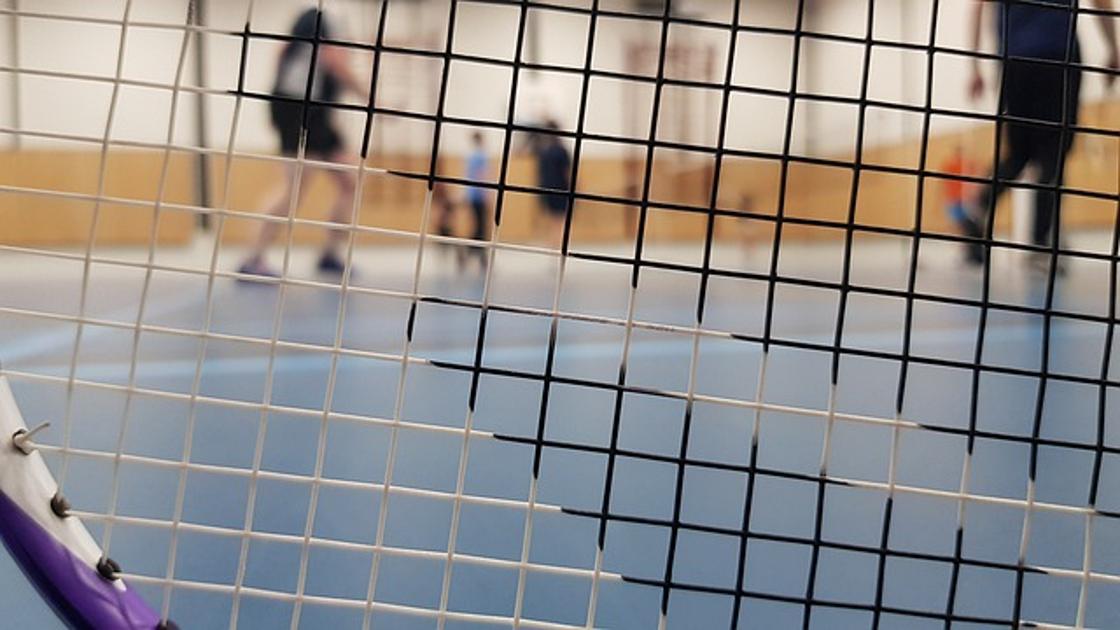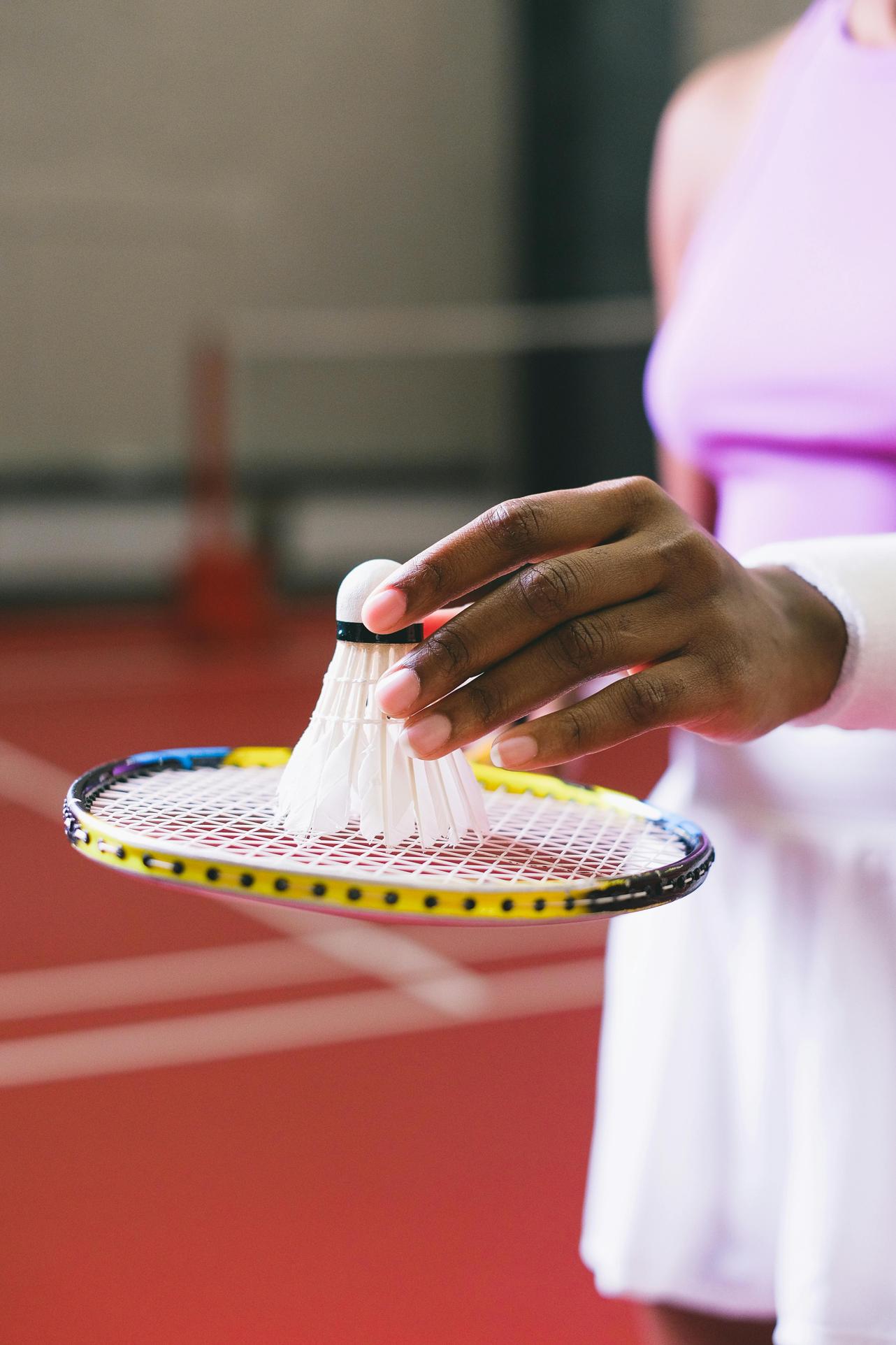How to Hold a Badminton Racket Correctly
Introduction
Learning how to hold a badminton racket correctly sets the foundation for your performance on the court. An improper grip leads to ineffective strokes, reduced control, and even potential injury. A proper grip allows you to execute precise shots, powerful smashes, and graceful serves. Understanding and mastering the basics ensures you can develop your skills efficiently and enjoy the game to its fullest.
This guide aims to provide a comprehensive look into the different types of badminton grips, how to implement them, and the common pitfalls to avoid. Whether you are a beginner trying to get a grasp on the basics, or a seasoned player looking to refine your technique, a well-honed grip is your gateway to better performance. Let’s dive into the nuances of holding a badminton racket correctly.

Understanding the Importance of a Correct Grip
A correct grip is crucial for several reasons. First, it enhances your ability to control the racket and, consequently, the shuttlecock. This means more accuracy in your shots. Second, the right grip reduces the risk of injury. A poorly held racket can lead to strains in your wrist, elbow, or shoulder.
Moreover, different grips serve different purposes. Knowing when to use a forehand or a backhand grip can give you a tactical advantage during a match. Being versatile and quick to switch between grips makes you unpredictable and keeps your opponent on their toes.
Types of Badminton Grips
Grips are the foundation of your strokes, and there are three primary types of grips every player must know.
Forehand Grip
The forehand grip is the most commonly used grip in badminton. It is fundamental for executing forehand strokes, smashes, and serves. To adopt the forehand grip, imagine you are shaking hands with the racket. Wrap your fingers around the handle, forming a V-shape between your thumb and index finger. Ensure that the racket face is perpendicular to the floor.
A good forehand grip allows you to perform powerful smashes and controlled net shots. It’s flexible enough for executing a variety of strokes, from clears and drives to drops and lifts. Practicing this grip increases your comfort with the racket and develops the muscle memory needed for advanced play.
Backhand Grip
The backhand grip is essential for backhand strokes, such as backhand clears, drives, and smashes. This grip is similar to the forehand grip but requires a slight rotation. Hold the racket as you would in a forehand grip, then rotate the racket away from your body slightly, so your thumb is against the beveled edge.
This thumb placement provides the power and stability needed for backhand shots. The backhand grip is less natural for many players compared to the forehand grip, so dedicated practice is necessary. Special attention to thumb placement and wrist action can lead to more effective backhand strokes and improved overall gameplay.
Universal Grip
The universal grip, also known as the neutral grip, combines elements of both the forehand and backhand grips. It’s a convenient grip to use for quick, defensive plays or when you need to switch directions swiftly. The racket should be held loosely with the fingers, allowing for quick adjustments in grip when needed.
This grip offers a middle ground for players who need to transition quickly between shots. While not as specialized as the forehand or backhand grips, the universal grip gives you the flexibility to react efficiently in fast-paced situations. Mastering this grip can make you more adaptable on the court.

Step-by-Step Guide to the Forehand Grip
- Hold the racket handle as if shaking hands with someone.
- Ensure a V-shape forms between your thumb and index finger.
- Keep the racket face perpendicular to the floor.
- Wrap the remaining fingers comfortably around the handle.
- Keep your grip relaxed but firm enough to control the racket.
Step-by-Step Guide to the Backhand Grip
- Start by holding the racket in a forehand grip.
- Rotate the racket slightly away from your body.
- Place your thumb against the flat, beveled edge of the handle.
- Ensure your other fingers wrap around the handle naturally.
- Keep the grip tight enough for control but relaxed for flexibility.
Transitioning Between the Forehand and Backhand Grips
Transitions between grips should be smooth and quick. When switching from forehand to backhand:
- Loosen your grip slightly.
- Rotate the racket handle within your hand.
- Adjust the thumb and finger positions as needed.
- Practice the transition to make it seamless during play.
Smooth transitions help you respond quickly to your opponent’s shots, optimizing your gameplay and making you more versatile on the court.
Common Mistakes and How to Fix Them
Understanding common grip mistakes helps you correct them early and avoid ingrained bad habits.
Over-tightening the Grip
Holding the racket too tightly can restrict wrist action and tire your arm quickly. Keep your grip relaxed yet secure, allowing for fluid motion.
Incorrect Finger Positioning
Improper placement of fingers can lead to weak shots and reduced control. Ensure fingers wrap naturally around the handle, with the thumb and index finger forming a V-shape for forehand and thumb support for backhand.
Grip Switching Errors
Delayed or awkward transitions between grips can hinder your performance. Practice switching grips without looking at your racket to build muscle memory and improve speed.
Tips from Professional Players
Professionals emphasize the importance of a relaxed grip. A looser hold improves flexibility and reaction time. They also suggest practicing wrist movements to better control the racket’s angle. Watching professional matches can also provide insights into how top players switch grips seamlessly during intense rallies.

Practice Drills for Perfecting Your Grip
Consistent practice helps engrain the correct grip into your muscle memory.
Solo Drills
- Shadow Swings: Practice swinging the racket without a shuttlecock to focus on grip and form.
- Wall Rally: Hit the shuttlecock against a wall to practice adjusting grips quickly in a controlled environment.
Partner Drills
- Grip Switch Drills: Partner serves shuttlecocks alternately to forehand and backhand, forcing quick grip changes.
- Controlled Rally: Engage in light rallies focusing solely on maintaining and switching grips correctly.
Grip Maintenance and Equipment
Maintaining your racket grip is essential. Replace worn-out grips to ensure optimal performance and comfort. Choose a grip material that suits your needs—towel grips for absorbency or rubber grips for a firmer hold. Regularly check for wear and tear to keep your equipment in top condition.
Conclusion
Mastering how to hold a badminton racket correctly is fundamental to advancing your skills. From understanding the importance of a correct grip to learning the forehand, backhand, and universal grips, this guide provides the insights needed for improvement. By adhering to the provided steps, avoiding common mistakes, and incorporating professional tips and practice drills, players can elevate their game and enjoy badminton more thoroughly. Remember, a good grip is the first step towards a great game.
Frequently Asked Questions
What is the correct way to hold a badminton racket for beginners?
Beginners should start with the forehand grip, which is similar to a handshake. Form a V-shape between the thumb and index finger and wrap the other fingers naturally around the handle.
How do I switch quickly between the forehand and backhand grips?
To switch quickly, practice loosening your grip slightly, rotating the racket handle within your hand, and adjusting the thumb and fingers. Consistent practice builds speed and efficiency.
Can the wrong grip affect my gameplay?
Yes, an incorrect grip can lead to weak shots, reduced control, and potential injuries. A proper grip ensures effective strokes, better performance, and overall enjoyment of the game.
